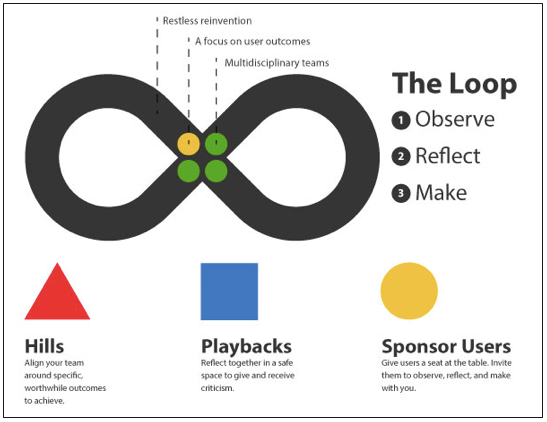The Differences Between Machine Learning And Predictive Analytics
Machine learning applications can be highly complex, but one that’s both simple and very useful for business is a machine learning algorithm that compares employee satisfaction ratings to salaries. Instead of plotting a predictive satisfaction curve against salary figures for various employees, as predictive analytics would suggest, the algorithm assimilates huge amounts of random training data upon entry, and the prediction results are affected by any added training data to produce real-time accuracy and more helpful predictions. ... Predictive analytics can be defined as the procedure of condensing huge volumes of data into information that humans can understand and use. Basic descriptive analytic techniques include averages and counts. Descriptive analytics based on obtaining information from past events has evolved into predictive analytics, which attempts to predict the future based on historical data. This concept applies complex techniques of classical statistics, like regression and decision trees, to provide credible answers to queries
Creating With Cognitive

“Our IAIC initiatives were really born in response to our Clients. They said to us, ‘We’re intrigued by the concept of Cognitive Automation — but we don’t really know how it can affect our business’. We knew we had to create a safe place where companies could experiment combining process based automation solutions like Robotics Process Automation (RPA) and Business Process Management (BPM) with Autonomic and Cognitive Assets. Our process starts with an Education session to demystify different types of automation and arrive on common definitions. We then begin Ideating on how this technology could impact the overall organization and business processes. Here we take a hard look at User Experience, End to End Process Views and what the “art of the possible” could become in the future. Next, we move to a Strategy session, where we bring data scientists, business analysts, software engineers and developers together to re-imagine what the client — and their customers — really need to meet their expectations and begin applying the defined technologies to actual client use cases.
Data-Savvy Banking Organizations Will Destroy Everyone Else
“To win in today’s market and ensure future viability, it is essential that organizations capture value quickly, change direction at pace, and shape and deliver new products and services. Organizations also need to maximize the use of ‘always on’ intelligence to sense, predict and act on changing customer and market developments,” said Debbie Polishook, group chief executive, Accenture. The good news is that, despite what appears to be an ominous future, over 40% of executives see more opportunities than threats compared to two years ago. The key is to break down silos and leverage data and insights to support both internal and external business needs. Intelligent organizations have five essential ingredients that contribute to a lasting and impactful business process transformation. These essential provide the foundation for an agile, flexible and responsive organization that can act swiftly to market and consumer changes and be in a better position to succeed
Where NEXT for Tech Innovation in 2018?

Healthcare is an industry that is ripe for disruption. We will begin to see the power of IoT in healthcare with the emergence of inexpensive, continuous ways to capture and share our data, as well as derive insights that inform and empower patients. Moreover, wearable adoption will create a massive stream of real-time health data beyond the doctor’s office, which will significantly improve diagnosis, compliance and treatment. In short, a person’s trip to the doctor will start to look different – but for the right reasons. Samsung is using IoT and AI to improve efficiency in healthcare. Samsung NEXT has invested in startups in this area, such as Glooko which helps people with diabetes by uploading the patient’s glucose data to the cloud to make it easier to access and analyse them. Another noteworthy investment in this space from Samsung NEXT is HealthifyMe, an Indian company whose mobile app connects AI-enabled human coaches with people seeking diet and exercise advice.
Security Settles on Ethereum in First-of-a-Kind Blockchain Transaction
“It’s quite exciting that you can now leverage any clearing system, and it’s legally enforceable on even a public blockchain,” said Avtar Semha, founder and CEO of Nivaura, whose technology was used last year to issue an ethereum bond. Semha says it’s unclear with the note being issued Friday exactly how much will be saved on the overall cost of the transaction. But he added that in the ethereum bond last year the final cost was reduced from an estimated 40,000 pounds to about 50 pounds, “which is pretty awesome,” he said. Further, law firm Allen and Overy helped ensure the note was compliant, the Germany-based investment services firm Chartered Opus provided issuance services and Marex helped fix and execute the note within a “sandbox” created by the U.K. Financial Conduct Authority (FCA). As revealed for the first time to CoinDesk, on March 14, Nivaura also received full regulatory approval from the FCA that removed some restrictions and allows the company to operate commercially.
IoT and Data Analytics Predictions for 2018
With the increased collection of Big Data and necessity of advanced analytics, the year 2018 will witness high usage of cloud-based analytics software rather than on-premises software. Reports suggest that more than 50% of businesses will opt cloud-first strategy for their initiatives around big data analytics. AI will completely revolutionize the way the organizations work today. Enterprises will take full advantage of Machine Learning to optimize infrastructural behavior, transform business process, and improve the decision-making process. Gartner states that AI is just the starting of the 75-year technological cycle and it will utilize revenue for 30% of market-leading businesses. According to Gartner, natural language will play a dual role as a source of input for many business applications and for a variety of data visualizations. The operational transformation is necessary to adopt algorithmic business with DNNs (deep neural networks) in the year 2018. This will be a standardized component in the toolbox of more than 80% of data scientists.
Beyond Copy-Pasting Methods: Navigating Complexity

Why is agility a good idea? When you take Jeff Sutherland’s book, it says Scrum: Doing twice the work in half the time. At first sight that looks like a pure efficiency issue. But if we ask experienced agilists why they are doing agile, they usually come up with a list of challenges for which agile works better than other approaches: users only half understand their own requirements. Requirements change because the context changes. You have to build technological substitution into your design. Your solution is connected to many other things, and they all interact and change. But also inside the project you know there will be unpredictable problems and surprises. If we look behind the obvious: what is the common force that makes these challenges behave the way they do? The answer is complexity. Exploring complexity has a big advantage. Once we understand more about the complexity behind the problems which we are trying to solve with agile, we in fact clarify the purpose of our agile practice.
Building a new security architecture from the ground up
Overseeing an infrastructure that is operating thousands of servers is a burden on any architecture team. Moving those servers—all or in part—to the cloud takes patience and innovation. The innovation part, Fry said, is key because “most commercial security products are designed and built for specific use cases. Scale and complexity typically are not present,” meaning that architects in those situations need to adapt ready-built products to their networks or develop new tools from scratch, all of which takes time, money, and skill. Further, not all parts of the network can be treated equally; enterprise and customer-facing environments differ from test environments differ from production environments. When dealing with networks like those at Yahoo or Netflix, the need to think “outside the box” and innovate are, “not desirable; it’s a requirement,” said Fry. Though a security architect may be primarily concerned about security features and controls, the business is primarily concerned about availability and uptime.
Enterprises need a new security architecture: Graeme Beardsell
Today, data, applications, and users are outside the firewall and on the cloud, where they traverse the public Internet. To paraphrase, traditional security systems are guarding a largely empty castle. This means that enterprises need new approaches in their concept of security and to build new security architecture. Essentially, security should be designed to take advantage of the shape of the Internet and not try to defy it. The other challenge that is perhaps ‘invisible’ is the large number of vendors and solutions that each organization needs to manage. Analysts now advocate rationalizing multiple solutions by different vendors into suites of solutions by a single vendor to provide greater efficiency in productivity, and also towards solutions that share an integrated platform to facilitate data exchange and analysis.
10 Lessons Learned from 10 Years of Career in Software Testing
There is nothing wrong in getting certified but it’s not compulsory. A good tester needs to possess testing skills like sharp eye for details, analytical and troubleshooting skills etc. and I believe no certification can prove that you are good at those mentioned skills. While writing test cases, none of us would prefer to think about boundary value analysis and decision tables specifically. What one needs is application of common sense on knowledge. Who would like a person who indicates litter in your balcony and makes you sweep it? No matter if he is helping to make something clean, mostly he won’t be appreciated. That is how the profession is! You might or might not be appreciated for the quality improvement work you are doing but you need to understand importance of what you are doing. And on timely basis, you need to pat on your back for the work you are doing.
Quote for the day:
"Character is much easier kept than recovered." -- Thomas Paine
No comments:
Post a Comment